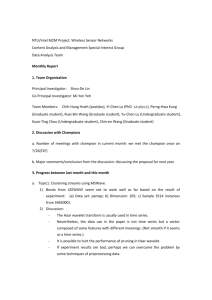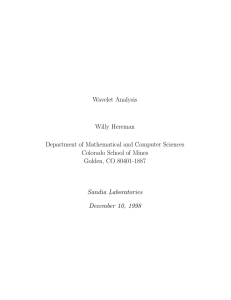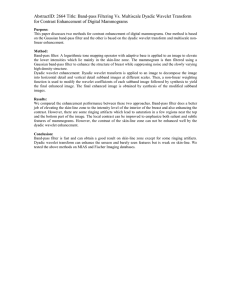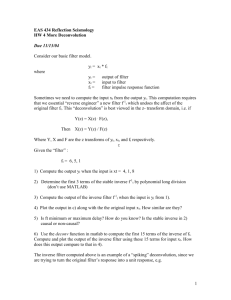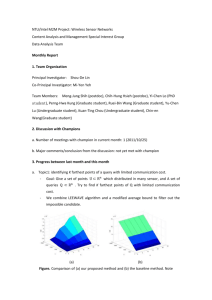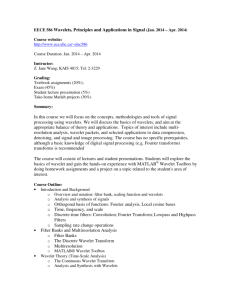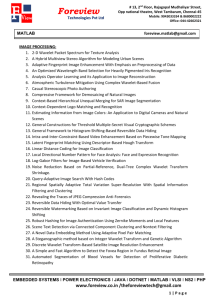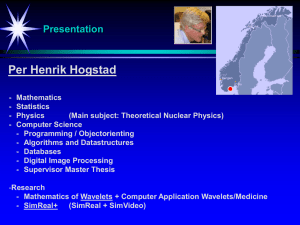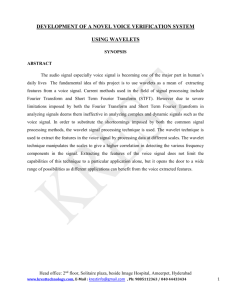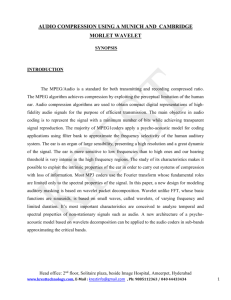Presentation 09 - Tufts Wireless Laboratory
advertisement
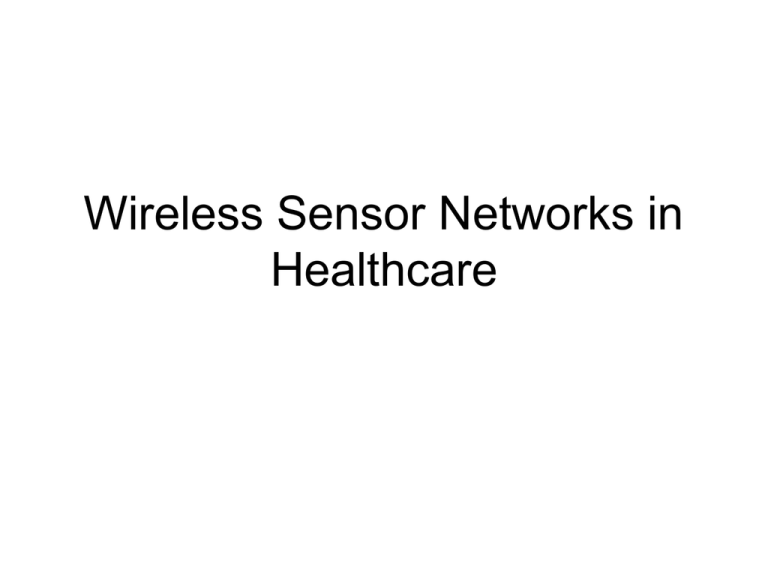
Wireless Sensor Networks in Healthcare Potential and Challenges • integrate available specialized medical tech. with wireless networks (ex: wearable accelerometers with integrated wireless cards for patient monitoring) • Benefits: save on medical expenses, time (less face-to-face appointments required), allows more participants in clinical trials Requirements • Interoperability between biomedical devices required • Event ordering, timestamps, synchronization, quick response in emergencies required • Reliability and robustness for making accurate diagnoses and proper functioning in uncontrolled environments • Integration of many types of sensors demands new node architecture Requirements (cont.) • Operation in buildings results in further interference due to walls, etc. decreasing reliability • Multi-modal collaboration and energy conservation • Multi-tiered data management • Privacy of records: ownership of information not always clear – Priority override must be carefully designed – Data available during emergencies – Realtime role-based access control Acceptance of WSNs by patients • Especially important for elderly patients: – Tendency to reject technology – Must be intuitive and easy to operate • A study in which elderly residents of Sydney participated in an open-ended discussion found: – Overall positive view of WSNs due to implications for independence – Ashamed of visible sensors (design as unobtrusive as possible) – Adherence issues due to forgetfulness – Distrust of technology – Privacy Implementation • Sensors: various types of wearable biomedical sensors with integrated radio transceivers (ex: accelerometer in bracelet to detect hand tremors) – Ad hoc network using Zigbee protocol? • Low power consumption of protocol makes it desirable for this application • Radio signal received by cell phone and transmitted to server • Analysis of raw data performed via wavelet analysis • Decision tree or artificial neural network used to decide appropriate action (data is within normal range, outside normal range and either does or does not require emergency action, etc.) • Data stored in server side database and report is generated to send to healthcare professional Monitoring and Data Transmission • Monitoring and transmission can occur continuously, periodically or be alert-driven (case-dependent) • Transmit differential data to decrease energy consumption/traffic • Priority-based transmission: path of transmission determined by nature of data, with emergency signals receiving highest priority • Sensors (and potentially other wireless devices in the area) form an ad hoc network – If cell phone fails to transmit data, data can be transmitted over multiple hops in ad hoc network to travel within range Data Transmission (cont.) • ZigBee could be appropriate specification for networking biomedical devices – Significantly lower wake up time than Bluetooth (15 ms or less vs. 3 s) > low power consumption, long battery life – Inexpensive transceivers – Capable of establishing self-forming, selfhealing mesh networks Motion Detection: Wavelet Analysis • Continuous Wavelet Transform (CWT)similar to Fourier Transform, but with a variety of probing functions • b translates function across x(t) and a varies time scale •(t), when b=0 and a=1, represents mother wavelet of a family of wavelets • problem with CWT - overly redundant and extremely difficult to recover original signal Discrete Wavelet Transform • To limit redundancy, DWT restricts variations in translation and scale (often to powers of two) • Recovery tranformation: – Where a=2k, b = l * 2k, and d(k,l) is a sample of W(a,b) at discrete points • Scaling function: – c(n) is a series of scalars defining specific function • Wavelet: – d(n) is a series of scalars related to x(t) Filter Banks • Most basic filter bank: x(n) is divided into two - ylp(n) and yhp(n), using a digital lowpass filter H0 and highpass filter H1 respectively Filter Banks (cont.) • Using this method, twice the points of original function must be generated • Compensate by downsampling • Signal smoothed by series of low pass filters • Original signal broken down into frequency bands > useful information about signal can be determined

